Ethnic diversity and miscegenation in Iran has begun since the arrival of the Aryans, Babylonians, Sumerians, and has continued until today. Although the main ethnic Iranians are Aryans, over the years as a result of political developments and invasions of other nations, Iran always witnessed a huge miscegenation. For example, we can refer to Alexander the Great’s campaign and the Arab invasion of Iran. After Alexander The Great‘s arrival in Iran, Greek troops and soldiers later married and settled in this land, as well as the Arab-Muslim invasion of Iran, the migration of Arab tribes to various parts of Iran began.
This miscegenation in Iran was not limited to Greeks and Arabs, but in different historical periods, other migrations were carried out by Ghaznawi Turks, Seljuks, and the Mongols. The Ghaznawi Turks and the Seljuks, who made up the largest number of immigrants after their arrival in Iran, remained in the country. The Mongol invasion was another factor in the immigration of the populous Mongolian Race and Tatar tribes that triggered a new wave of racial mixture in Iran.
Therefore, the racial mixture in Iran is not integrated and the population diversity that has been created for centuries by the mix of races and migrations has led to the emergence of Fars, Azeri, Kurdish, Lor, Baluch, Bakhtiari, Taleshi, Turkmen, Qashqai, Shah’savan and Arabs. Of course some other Ethnic minorities in form of smaller society also live in Iran.
Iranian Ethnicity
1 Persians: Persians are of Elamite or Aryan origin that immigrated to the Iranian plateau in the second millennium BC and named their territory “Pars” or Persia
What race is Persian considered?
2 Azeris: Azeri ethnicity in Iran is mostly concentrated in the northwest, in Azerbaijan region, and Ardabil province as the main Azeri settlement but also many of them reside in other provinces of the country. This ethnic group makes up about 25 percent of the Iranian population.
3 Turkmens: Turkmens or Turkomans are Iranian citizens of Turkish origin who mainly trace their roots to Central Asia. Turkmens are settled mostly in “Turkmen Sahara” located in north Iran, east of Mazandaran province and north of Khorasan province – in the neighboring country of Turkmenistan. .
Turkmen different tribes include: Koklan, Yamut and Teke. The Koklans live in the eastern mountainous areas of the Gorgan plain and around Bojnourd city. Yamuts mostly reside in the Gorgan plain, and some clans reside in Turkmenistan and some around Gonbad Kavus.
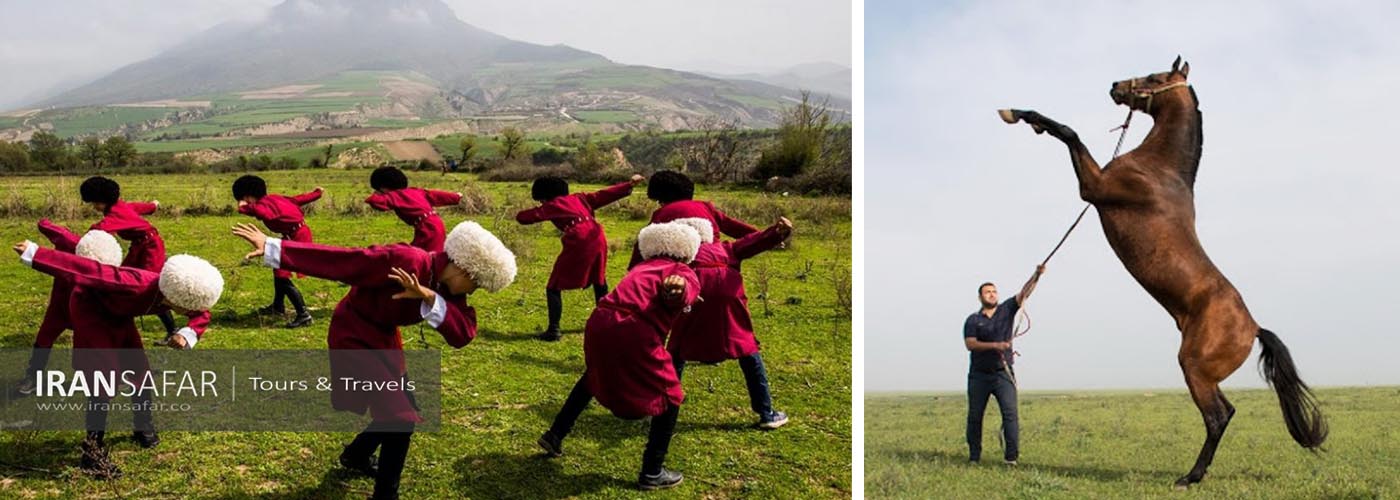
4 Kurds: Not only in the western part of the Iranian plateau, Kurds are scattered throughout a broader region of the Middle East and West Asia. This ethnic group is settled in southeastern Anatolia, the Zagros Mountains of western Iran, and portions of northern Iraq, northeastern Syria, western Armenia, and other adjacent areas. A sizable noncontiguous Kurdish population also exists in the Khorāsān region, situated in Iran’s northeast.
Iran’s Kurds live mostly along the Zagros Mountains, from the south of Baku in Azerbaijan to northern Lorestan and Khuzestan regions. They consist of different tribes such as Mangour, Jalai, Milan, and Ghara papaghi. Some migrating nomad Kurd tribes also exist around cities of Saqez, Sanandaj and Kermanshah. The most famous Kurdish nomads are the Sanjabi tribe around Kermanshah, the Kalhor tribe south of Kermanshah.
The Kurdish Language
The Kurdish language is a member of the Western Iranian branch of Indo-European languages. It is related to Persian and Pashto and is spoken in parts of Iraq, Turkey, Iran, Syria, Lebanon, Armenia, Georgia, Kyrgyzstan, Azerbaijan, Kazakstan and Afghanistan. According to 2010 statistics, about 25 million people spoke Kurdish.
Varieties of Kurdish Language
Basically, there are three varieties of Kurds, which are not mutually understandable.
Kurmanji: Spoken in Turkey, Syria, northern Iraq and northwestern Iran – about 15-20 million people.
Sorani: Spoken in Iraqi Kurdistan and the Kurdistan Province of Iran – about 6-7 million people.
Pehlewani: is spoken by about 3 million people in Kermanshah and Ilam provinces in Iran, and in the Khanaqin district in eastern Iraq
Kurdish Traditional Way of Life
5 Lurs: The Lur or Lor ethnicity reside mainly in Iran, west of the Zagros Mountains in the south of Kurdistan. During the rule of the Mongol Il-Khanids, the Lur tribe territory was divided into two main section: “Luristan Major” and “Luristan Minor” now called Kuhgilueh and Luristan.
Nowadays, the Lur society include a variety of tribes, including Sagvand, Bakhtiari, Mamasani, Lak and Kohgiluyeh & Boyer Ahmad.
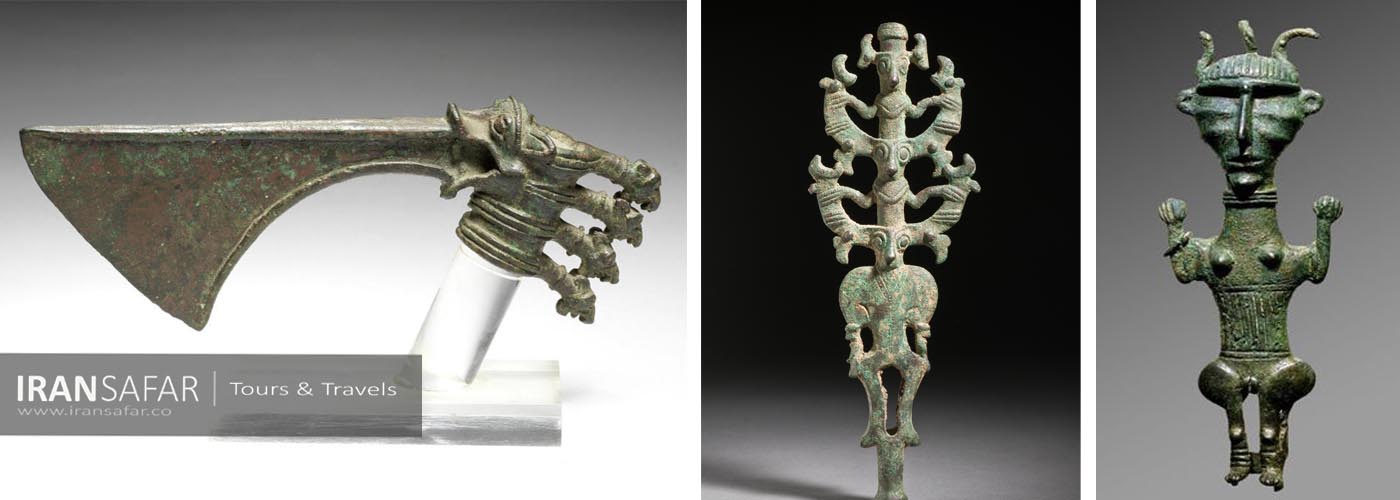
Bronzes of Luristan
6Baluch: Also spelled Baluch or Beluch, group of tribes speaking the Balochi language and estimated at about five million inhabitants in the province of Balochistān in Pakistan and also neighboring areas of Iran and Afghanistan. Iranian Baluch people live mostly in eastern provinces of Iran and in the cities of Baluchistan, Sistan, Kerman and parts of Khorasan. The Baloch are traditionally nomads, but settled agricultural existence is becoming more common.Due to the unsuitable nature of Sistan and Baluchistan, most Baluchis emigrated from this region to live in other parts of Iran such as Gilan, Mazandaran, Azerbaijan and Khorasan. They are mostly employed in agriculture and labor in these cities. These migrations are sometimes permanent and sometimes seasonal.
The most important Baluchi tribes are the Ahmadzai, Mirabdi, Rigi and Sarawani tribes.
7Qashqai: This is one of the strongest and largest Turkish-speaking ethnicities and tribes of Iran that live in Fars province. There are different theories about the Qashqai tribe origin but if we study all the geographical, historical, and linguistic assumptions that have been the result of the efforts of the scholars, we come to the conclusion that there is a land called Qashqa and a tribe named Qashqa and a river named Qashqa (Kashaka) and a specific Turkish dialect with the same name that still exists in present Uzbekistan. It’s more likely is that the Qashqai tribe have come to Iran in different eras and have always played a great role in the political history of Iran.
The yearly migrations of the Qashkai, looking for fresh pastures, drive them from the south to the north, where they move to their summer quarters called “Yailaq” in the high mountains; and from the north to the south, to their winter quarters, “Qishlaq”.Every year, they travel with their herds of goats and sheep from summer highland pastures north of Shiraz to winter pastures on lower and warmer lands near Bandar Abbas in the Persian Gulf, about 500 km to the south. But this traditional way of life is fast disappearing.
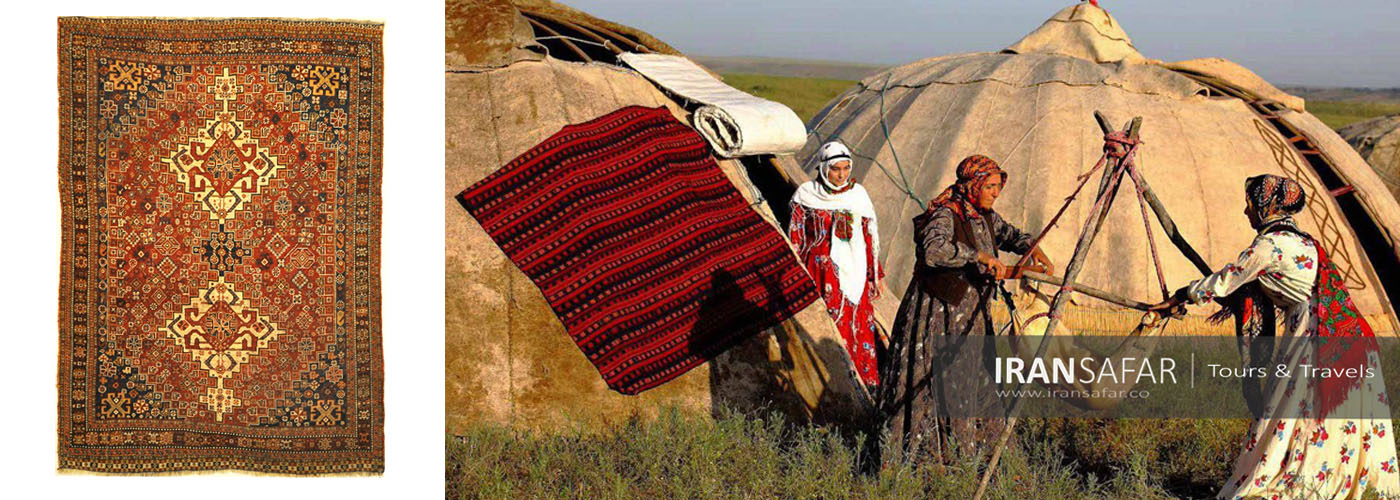
Qashqai Rugs
8 Arabs: Make up about 2 percent of Iran’s population, live mostly in Khuzestan province and in some Persian Gulf islands. The migration of these tribes began in the Sassanian era and increased after the conquest of Iran by Muslim Arabs. The Khuzestan Arabs are of the Semite race.
There is a misconception about Iranian Arabs and they are mistakenly referred to as people whose language has been changed to Arabic and they are not from any Arab race, which is ultimately not correct. Khuzestan Arabs are of a distinctive tribal and nomadic ancestry from Arabian Peninsula origin.
Iran Ethnic Diversity Map
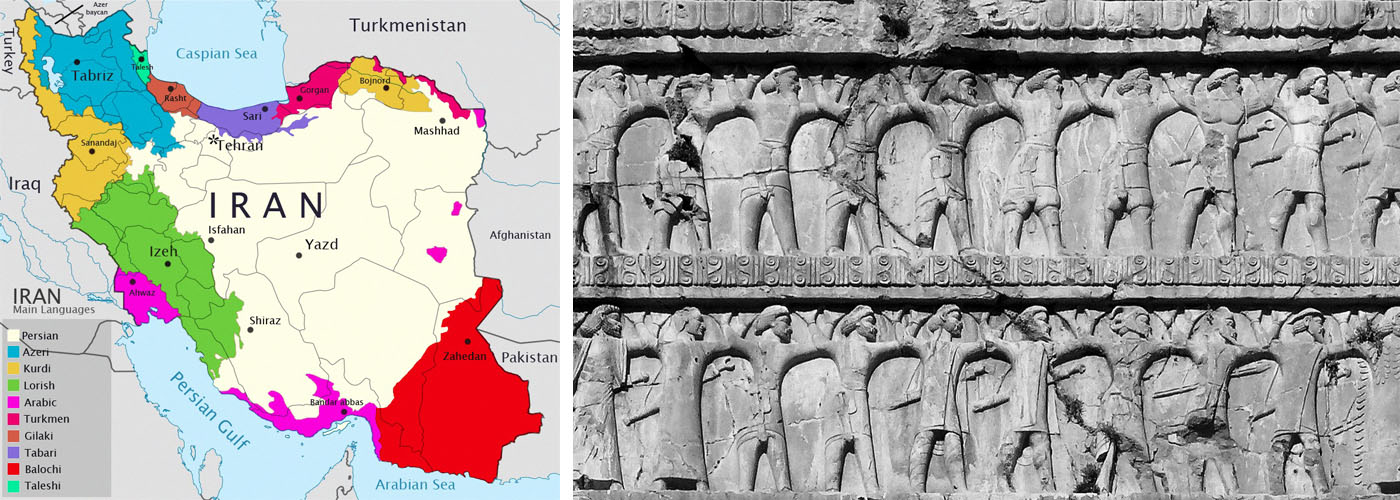
9 Talyshi: Talysh or Talesh is a tribal name referring to people who reside in northwestern Gilan, Ardabil province and southern part of Azerbaijan region. Today, Taleshis are scattered in the southern part of Azerbaijan and in the cities of Ali Abad, Bileh Savar, Jalilabad, Lankaran, Astara, Talesh and northern areas of Gilan province. The Taleshi people are nomadic and also settled. Those who live in villages and towns are called Talesh, and most of them are farmers, and those who live in mountainous areas are called “Galesh”, and their profession is animal farming.
The Talishis generally identify themselves with the ancient Cadusians, who inhabited the area to the southwest of Caspian Sea, bounded on the north by Kura River, including modern provinces of Ardabil and Gilan. The name Taleshi may be etymologically related to Cadusi, which has influenced the name of the Caspian and Caucasus

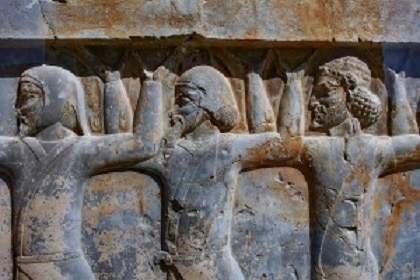


Hi.
Dear Writer, this is Iran’s ethnic map? I am really amazed by that!
In fact this is False Information from Iran about the nation of Iran Turkey Border.
I suggest you study more data by maps, sociality facts, historical sheets and any documents in this issue. You will find that almost all native inhabitants of these areas are Azerbaijani Turkic people. In the southern areas of the border between the two countries, due to recent hundred-year migrations, people with Kurdish and Turkish nations live. If you don’t correct that, I report in social network and any channels of them, that i can.
Dear Ali Hamzezad,
Thanks for your message and your careful correction. Please kindly be advised that the Iran Ethnic Groups diversity map in this article is based on World Atlas website information and many other informative sources have referred to it too. But you are right! the Iran-Turkey boundaries are mostly Azerbaijani Turkic areas and Kurds live in southern parts of West-Azerbaijan province of Iran in Tekab, Bukan, Piranshahr, Mahabad and Sardasht. Therefore, the Iran border with Turkey should be marked as Azeri region. This will be considered and the map will be revised in the next page-update soon.
Thanks!
Editorial Manager